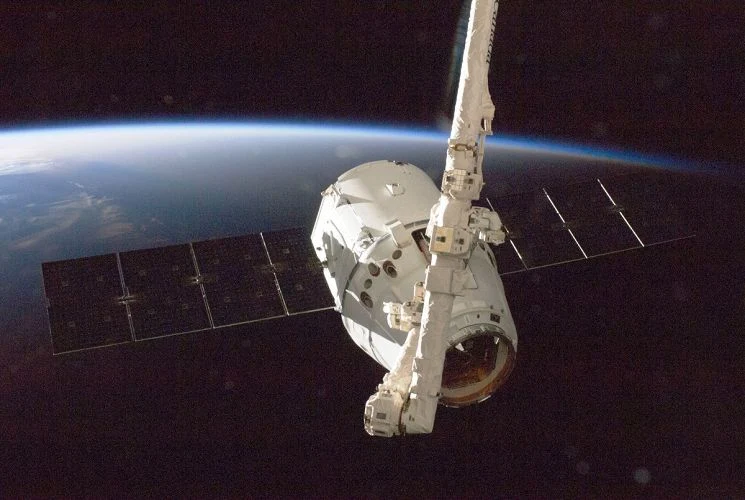NASA-ISRO SAR Mission (NISAR)
NASA and ISRO are collaborating on the NISAR satellite mission, set to launch in early 2024. The project, which is expected to cost USD 1.5 billion, is a significant investment in space exploration. NISAR's advanced radar technology, which uses dual frequencies for imaging, promises unprecedented clarity and precision in capturing Earth's dynamic features.
The satellite's primary mission extends beyond mere observation, focusing on extensive mapping of Earth's features, including land masses and ice sheets. This allows for the monitoring and analysis of various natural processes, including ecosystem disturbances and earthquakes.
NISAR is committed to providing open access to the data it accumulates, empowering scientists worldwide. This initiative aims to offer valuable insights into Earth's evolutionary processes, aid in the prediction of natural disasters, and facilitate in-depth studies on the planet's natural resources.
The global scientific community eagerly anticipates leveraging this open-access approach for a deeper understanding of our dynamic planet.
NISAR's Mission Objectives
A Dynamic View of Forests and Wetlands
NISAR emerges as a key player in unraveling the intricate relationships between Earth's forest and wetland ecosystems and their profound impact on the global carbon cycle. By delving into these changes, researchers aim to comprehend the far-reaching effects of climate change.
Unprecedented Insight into Earth's Dynamics
NISAR's data holds the potential to transform how we perceive and manage natural resources and hazards worldwide. The mission extends its reach beyond traditional observations, delving into Earth's dynamic surface, and interior, and even scrutinizing the elusive crust that envelopes our planet.
Applications Across Diverse Terrains
Earth's Cold Regions
NISAR's advanced radar technology is poised to delve into Earth's cold regions, providing an in-depth understanding of the dynamics at play. From polar ice sheets to frozen landscapes, the mission promises to uncover crucial data for climate scientists and researchers.
Terrestrial Ecosystems and Water Dynamics
The mission extends its gaze to terrestrial ecosystems and water bodies, contributing to a comprehensive understanding of Earth's intricate systems. This data is vital for monitoring and managing habitats for plants, animals, and humans.
Early Engagement Opportunities
For those eager to dive deeper into the NISAR mission, early engagement opportunities abound. Workshops, working groups, and activities are meticulously designed to inform and expand the NISAR user community, fostering a collaborative environment for knowledge exchange.
Featured Applications: Addressing Critical Challenges
Earthquake Hazards and Damage
One of NISAR's standout applications lies in its ability to provide critical measurements of ground deformation along faults, both before and after earthquakes. This real-time data is indispensable for understanding the occurrence, progression, and aftermath of seismic events.
Soil Moisture and Water Resources
NISAR's capability to provide high-resolution maps of surface soil moisture globally, at regular intervals, brings a paradigm shift in monitoring farm fields. This unprecedented detail is crucial for understanding and managing habitats and resources for various life forms.
The Magic of SAR Technology
NISAR introduces a revolutionary use of Synthetic Aperture Radar (SAR) technology, systematically mapping Earth using L-band and S-band radar frequencies. This enables the detection of surface changes, including movements as minuscule as centimeters, offering fine-resolution images unparalleled in precision.
NASA-ISRO Collaboration: A Symbiotic Purpose
NISAR's strength lies in the collaborative synergy between NASA and ISRO. Each space agency contributes optimized radars, enhancing the mission's capacity to observe a broader spectrum of changes than either could achieve individually.
Frequently Asked Questions
Q1: What makes NISAR unique among Earth-observing missions?
NISAR's uniqueness lies in its utilization of two radar frequencies, L-band and S-band, providing unprecedented precision in mapping Earth's surface changes.
Q2: How does NISAR contribute to understanding climate change?
By exploring Earth's forest and wetland ecosystems, NISAR provides crucial data that aids in comprehending the global carbon cycle and its influence on climate change.
Q3: Can individuals or organizations actively engage with NISAR?
Absolutely! NISAR encourages early engagement through workshops, working groups, and various activities designed to inform and expand the user community.

